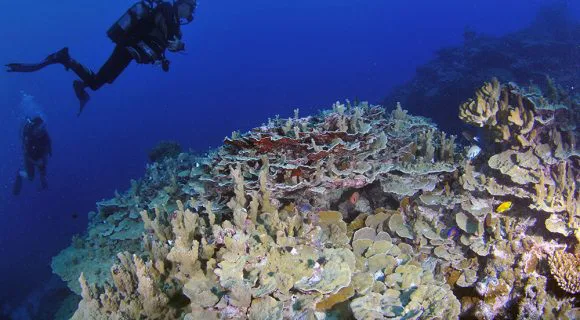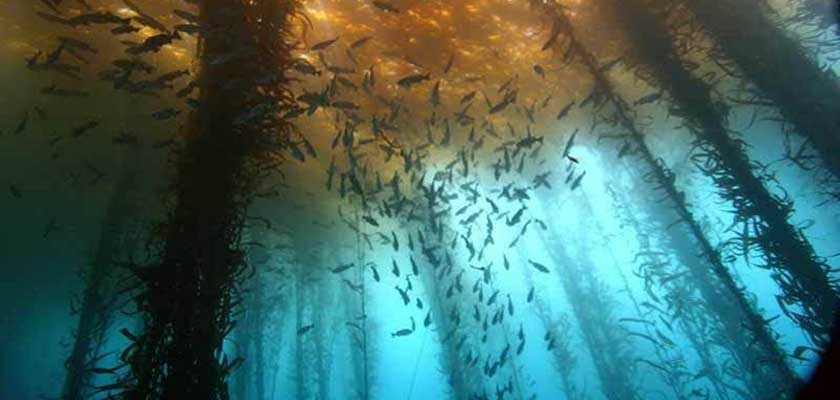Adverts
The Magic of Marine Sanctuaries
Imagine yourself floating in crystal-clear waters, surrounded by a kaleidoscope of vivid colors and exotic shapes. This is how many describe the experience of exploring the largest marine sanctuaries on the planet.
Because these underwater refuges are not only beautiful, they are also crucial to the health of our global ecosystem. 🌊🐠
Adverts
The Great Coral Reef
A Spectacle of Biodiversity
The Great Barrier Reef, located off the northeast coast of Australia, is the largest coral reef system in the world. It stretches for over 1,400 miles and is visible even from space.
However, what makes this sanctuary particularly fascinating is its immense biodiversity. More than 1,500 species of fish, 400 types of coral and a myriad of other marine life call this reef home.
Adverts
- Sea turtles
- Reef sharks
- Dugongs
- Starfish
Galapagos National Park
Darwin's Living Laboratory
The Galapagos Islands in the Pacific Ocean are known for their scientific and ecological importance. This archipelago inspired Charles Darwin in his theory of evolution, and continues to be a hotspot for research and conservation.
The Galapagos National Park encompasses a vast marine area that is a true underwater paradise. Here you can find:
- Playful sea lions
- Giant turtles
- Hammerhead sharks
- Galapagos Penguins
The Coral Sea of New Caledonia
An Untouched Refuge

Located in the southwest Pacific Ocean, the New Caledonia Coral Sea is one of the largest marine sanctuaries in the world. Covering an area of over 1.3 million km², this pristine haven is known for its clear waters and rich marine life.
However, it is home to several endangered species, including:
- Parrotfish
- Groupers
- Whale sharks
- Giant blankets
The Palau Marine Sanctuary
Protecting the Future
Palau, a small island nation in the Pacific, has taken bold steps to protect its marine resources. The Palau Marine Sanctuary, which covers the country’s entire Exclusive Economic Zone, is a shining example of conservation.
Commercial fishing is prohibited here, allowing marine ecosystems to flourish. Visitors to Palau can expect to find:
- Vibrant Coral Reefs
- Clownfish
- Blue sharks
- Anemone gardens
The Raja Ampat Archipelago
The Heart of Marine Biodiversity
Located in Indonesia, the Raja Ampat Archipelago is often referred to as the “Heart of Marine Biodiversity.” With over 1,500 small islands, this marine sanctuary is home to an incredible diversity of aquatic species.
The waters of Raja Ampat are famous for their stunning colors and unique underwater landscapes, where you can find:
- Mandarin fish
- Pygmy seahorses
- Schools of barracudas
- Manta rays
Marine Protected Areas of Cape Verde
An African Treasure
Located in the Atlantic Ocean, off the coast of West Africa, Cape Verde is an archipelago with impressive marine diversity.
Cabo Verde’s Marine Protected Areas are essential for the conservation of several marine species, including many that are endemic. In these waters, visitors can observe:
- Lemon sharks
- Spinner dolphins
- Pilot whales
- Colorful octopuses
Sailing through underwater paradises is an unforgettable experience that connects us deeply with the beating heart of the planet.
These marine sanctuaries not only offer us a glimpse into the world's natural beauty, but also serve as a reminder of the importance of environmental preservation. 🐢🌿
Conclusion
Exploring the largest marine sanctuaries on the planet is a journey that goes far beyond simple aesthetic appreciation.
Each of these underwater paradises, such as the Great Coral Reef, the Galapagos National Park, the New Caledonia Coral Sea, the Palau Marine Sanctuary, the Raja Ampat Archipelago and the Cape Verde Marine Protected Areas, plays a vital role in maintaining biodiversity and the health of the global ecosystem.
In addition to their unparalleled beauty, these sanctuaries are bastions of conservation, protecting countless endangered species and providing a safe haven for marine life to flourish.
Therefore, in addition to the visual wonder and scientific fascination, visiting these places gives us a deeper understanding of the importance of environmental preservation.
Therefore, the conservation of marine sanctuaries is crucial not only for the survival of the species that inhabit these areas, but also for the well-being of the planet as a whole. 🌍
As such, these underwater refuges are a testament to the magnificence of nature and a continual reminder that we have a responsibility to protect these natural treasures for future generations.
Therefore, by promoting awareness and sustainable tourism, we can ensure that these marine ecosystems remain pristine and vibrant.




